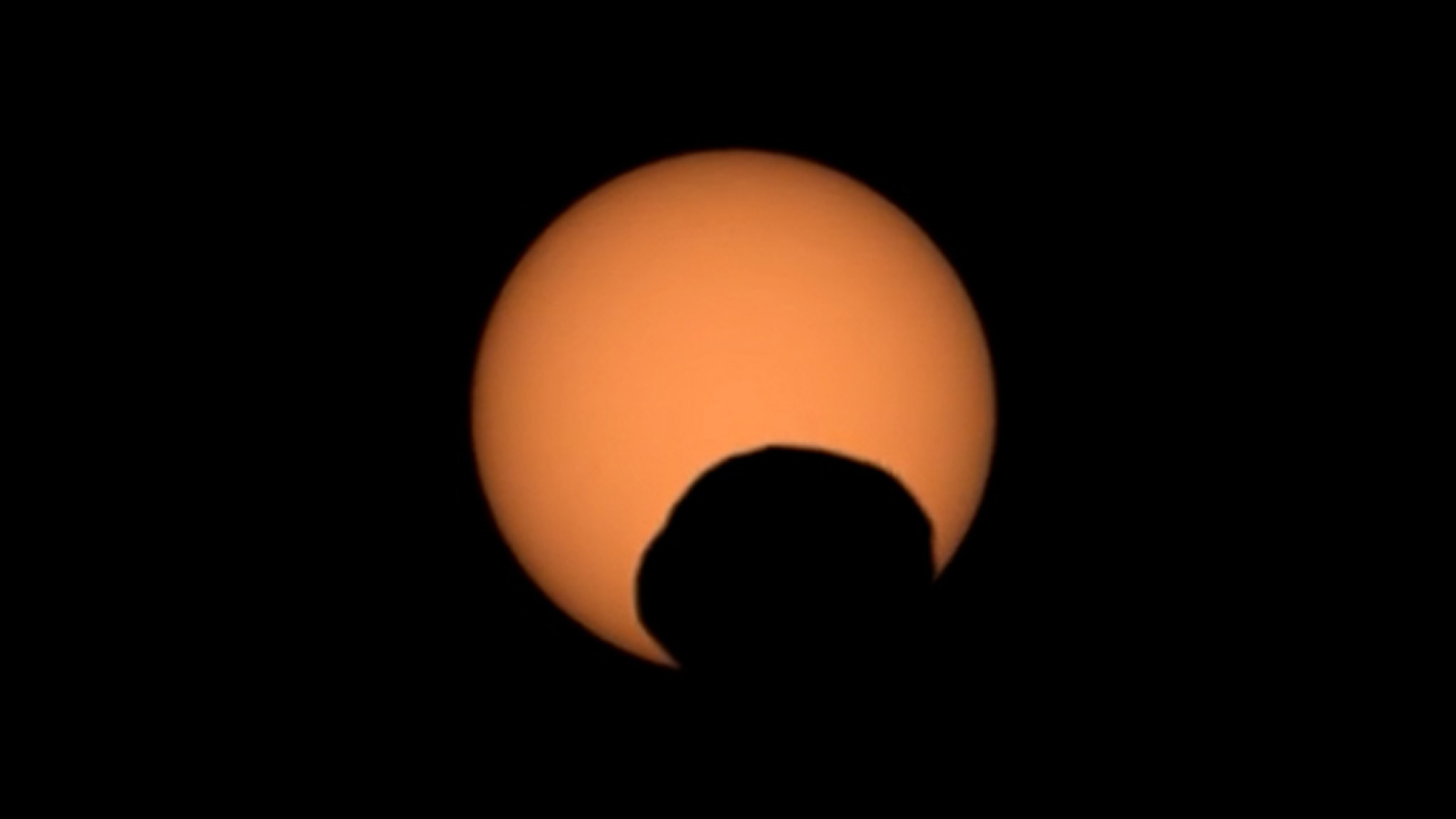NASA’s Perseverance rover, currently exploring the Martian surface, has captured an extraordinary celestial event on September 30, 2024. The rover recorded the silhouette of Phobos, one of Mars’ two moons, as it passed directly in front of the Sun. This fascinating occurrence, known as a transit, was captured using the rover’s Mastcam-Z camera and presents a unique view into Martian astronomy.
Phobos, named after the Greek god of fear and panic, is a small, irregularly shaped moon, resembling a potato in its appearance. Discovered by astronomer Asaph Hall in 1877, Phobos, along with its twin moon Deimos, has intrigued scientists for decades. Despite its diminutive size, roughly 157 times smaller in diameter than Earth’s Moon, Phobos plays a significant role in Martian science. Its dimensions measure approximately 17 miles (27 kilometers) at its widest point, making it a noteworthy subject of study.
The transit of Phobos over the Sun created a striking visual effect, where the moon’s shadow moved swiftly across the Martian landscape, reminiscent of a “googly eye” peering from the heavens. This phenomenon occurs regularly due to the moon’s orbit being almost perfectly aligned with the Martian equator and its proximity to the planet’s surface. Phobos orbits Mars every 7.6 hours, and as a result, these transits happen frequently, typically lasting around 30 seconds.
This is not the first time NASA’s rovers have witnessed such events. Since its landing in Jezero Crater in February 2021, Perseverance has recorded several transits of Phobos. Previously, the Curiosity rover captured a similar event in 2019, and the Opportunity rover documented an eclipse in 2004. These observations are crucial as they allow scientists to refine their understanding of Phobos’ orbit and its gradual inward spiral towards Mars. Current predictions suggest that Phobos will eventually collide with Mars in about 50 million years.
The Perseverance rover, a key player in NASA’s Mars 2020 mission, is equipped with advanced scientific instruments, including the Mastcam-Z. This camera system, operated by Arizona State University in collaboration with Malin Space Science Systems and the Niels Bohr Institute, is designed to capture high-resolution images and videos of the Martian environment. These images are vital for analyzing the planet’s geology, climate history, and potential for past microbial life, which are primary objectives of the mission.
Astrobiology is a central focus of Perseverance’s mission. The rover is tasked with searching for signs of ancient life and collecting rock and soil samples for future analysis. These samples are critical for understanding the planet’s past conditions and will help pave the way for human exploration. NASA, in partnership with the European Space Agency (ESA), plans to return these samples to Earth for detailed study, further advancing our knowledge of Mars.
Perseverance’s mission is part of NASA’s broader Moon to Mars exploration strategy, which includes the Artemis missions to the Moon. These missions aim to prepare for human exploration of Mars, leveraging the knowledge and technologies developed through lunar exploration. NASA’s Jet Propulsion Laboratory, managed by Caltech, is responsible for the construction and operation of the Perseverance rover.
The recent video of Phobos’ transit, produced by the Space Science Institute, offers a remarkable glimpse into the dynamic interactions between Martian moons and the Sun. Such events not only captivate the imagination but also provide valuable data for scientific study. Understanding these celestial dynamics is essential for planning future missions and ensuring the success of human exploration efforts.
For those interested in exploring more about the Perseverance rover and its mission to Mars, additional information can be found on NASA’s dedicated Mars 2020 website. This resource provides comprehensive details about the rover’s objectives, the science behind its mission, and the technologies enabling its journey across the Martian surface.
As we continue to explore Mars and its moons, the insights gained from these missions will enhance our understanding of the solar system and our place within it. Events like the transit of Phobos serve as a reminder of the intricate and dynamic nature of celestial bodies, inspiring curiosity and advancing scientific discovery.
For more Information, Refer to this article.



































